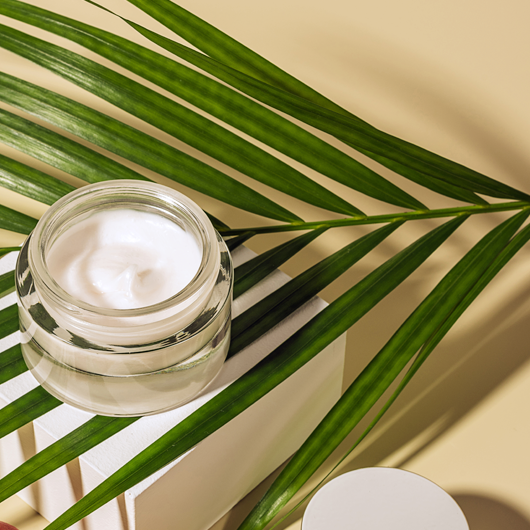GSB Natural Preservative Powder
Gluconolactone + Sodium Benzoate
Natural Broad-Spectrum Preservative. Cosmetic Ingredient used in the manufacture of skin care products to keep your formulas free of bacteria and contaminents.
Gluconolactone & Sodium Benzoate (GSB) Natural Preservative Powder is a plant-derived powder that extends the shelf life of water-containing skincare formulas while preserving natural ingredient integrity. Its key benefit is broad-spectrum preservation without synthetic parabens.
If you struggle with short shelf-life contamination or skin-irritating preservatives, this powder helps maintain product safety for your DIY serums, lotions, and creams while remaining gentle on skin.
- Ecocert accepted a broad-spectrum preservative for bacteria, yeast, and mold.
- Non-GMO and GRAS status for formulation confidence
- Powder form for precise dosing in DIY serum boosters and lotion making
- Moisturizing action that supports formulation stability without added fillers
- Suitable for a wide range of skin types and paraben-free
Unlike single-ingredient liquid preservatives, GSB combines gluconolactone plus sodium benzoate to deliver broader antimicrobial coverage. Compared to premixed liquid systems, the powder format simplifies storage, shipping, and customization for professional-strength peptide formulas.
Backed by Ecocert acceptance and GRAS designation, this preservative powder is recommended for formulators who prioritize natural sourcing, transparent certification, and measurable protection. Learn recommended usage rates and perform compatibility testing for your specific formula before large-scale production.
Benefits of Using Natural Preservative Powders
- Nature's Preservation: Embrace a natural approach to preservation with Gluconolactone and Sodium Benzoate (GSB). Derived from plant-based sources, this preservative powder helps maintain the integrity of your skincare formulations while staying true to your commitment to nature.
- Extended Shelf Life: Our GSB Natural Preservative Powder extends the shelf life of your skincare creations. Say goodbye to premature spoilage and hello to products that remain effective over time, so you can enjoy their benefits to the fullest.
- Broad-Spectrum Protection: This powerful combination of Gluconolactone and Sodium Benzoate provides broad-spectrum protection against a variety of harmful microorganisms that can compromise the quality of your skincare products. Enjoy peace of mind knowing your formulations are safeguarded.
- Gentle and Skin-Friendly: Unlike harsh synthetic preservatives, GSB Natural Preservative Powder is gentle on the skin. It is suitable for a wide range of skin types and minimizes the risk of skin irritation, ensuring your creations are effective and easy to use.
- Preserve Natural Essence: Maintain the authenticity of your formulations with GSB Natural Preservative Powder. Its unique properties help preserve the natural essence of your ingredients, so you can continue to experience the goodness that Mother Nature has to offer.
Elevate your skincare formulations with Skin Perfection's Gluconolactone & Sodium Benzoate (GSB) Natural Preservative Powder and embrace a new era of effective, safe, and nature-inspired preservation.
- Broad-spectrum Preservative Accepted by Ecocert
- Naturally Occurring
- Moisturizing
Non-GMO + GRAS + ECOCERT
EWG Score
-
Gluconodeltalactone and Sodium Benzoate Origin:
INGREDIENTS MATTER.
Customer Reviews
Questions & Answers
Have a Question?
-
Can this preservative be used for toothpaste formulations?
All of our cosmetic ingredients are cosmetic grade. They are meant to be used in topical formulations for the skin. Gluconolactone and Sodium Benzoate is recommended for external use only.




